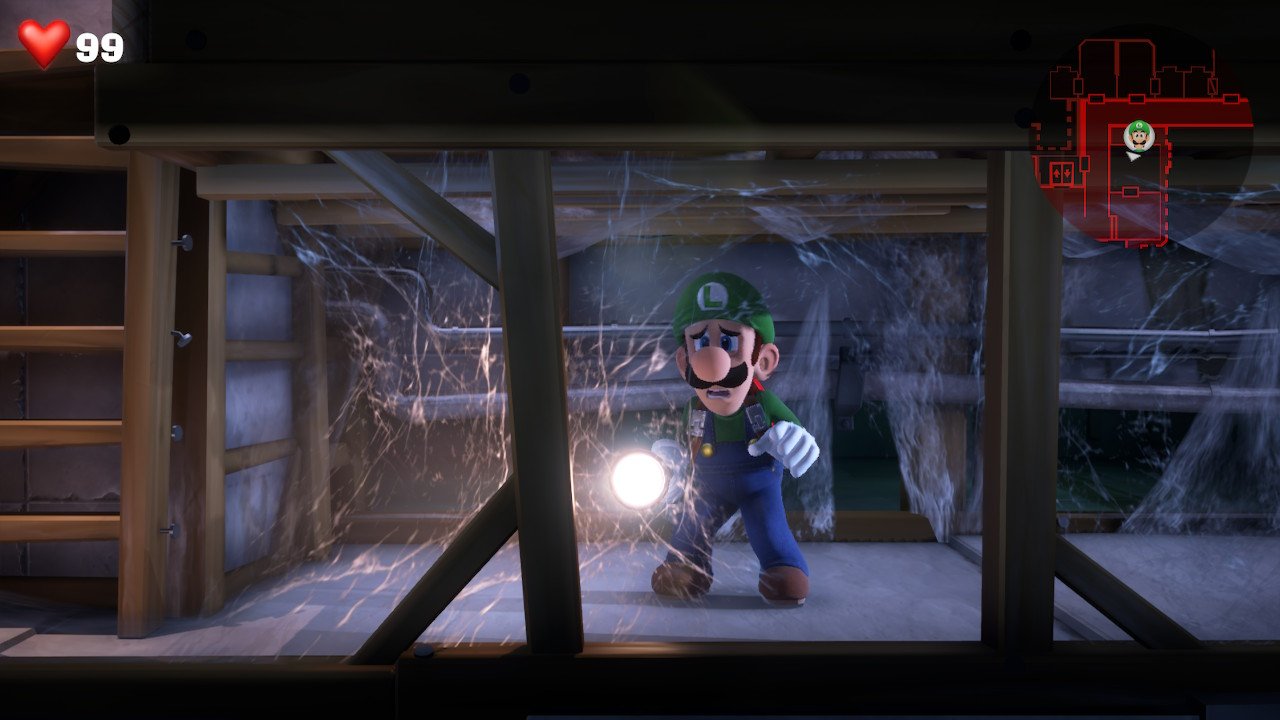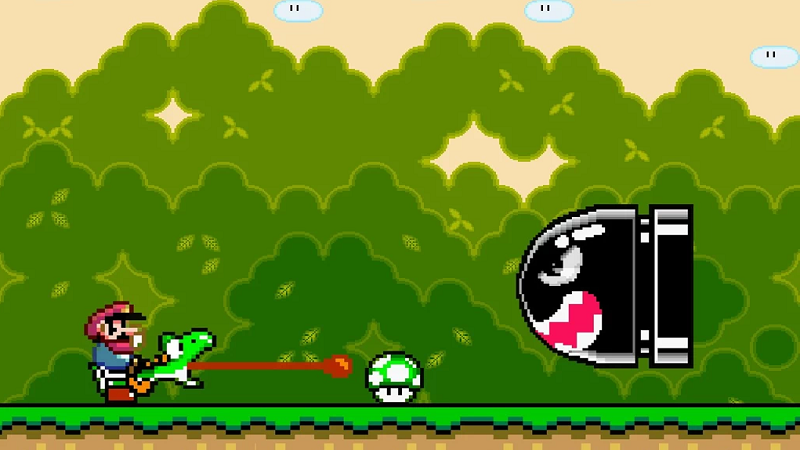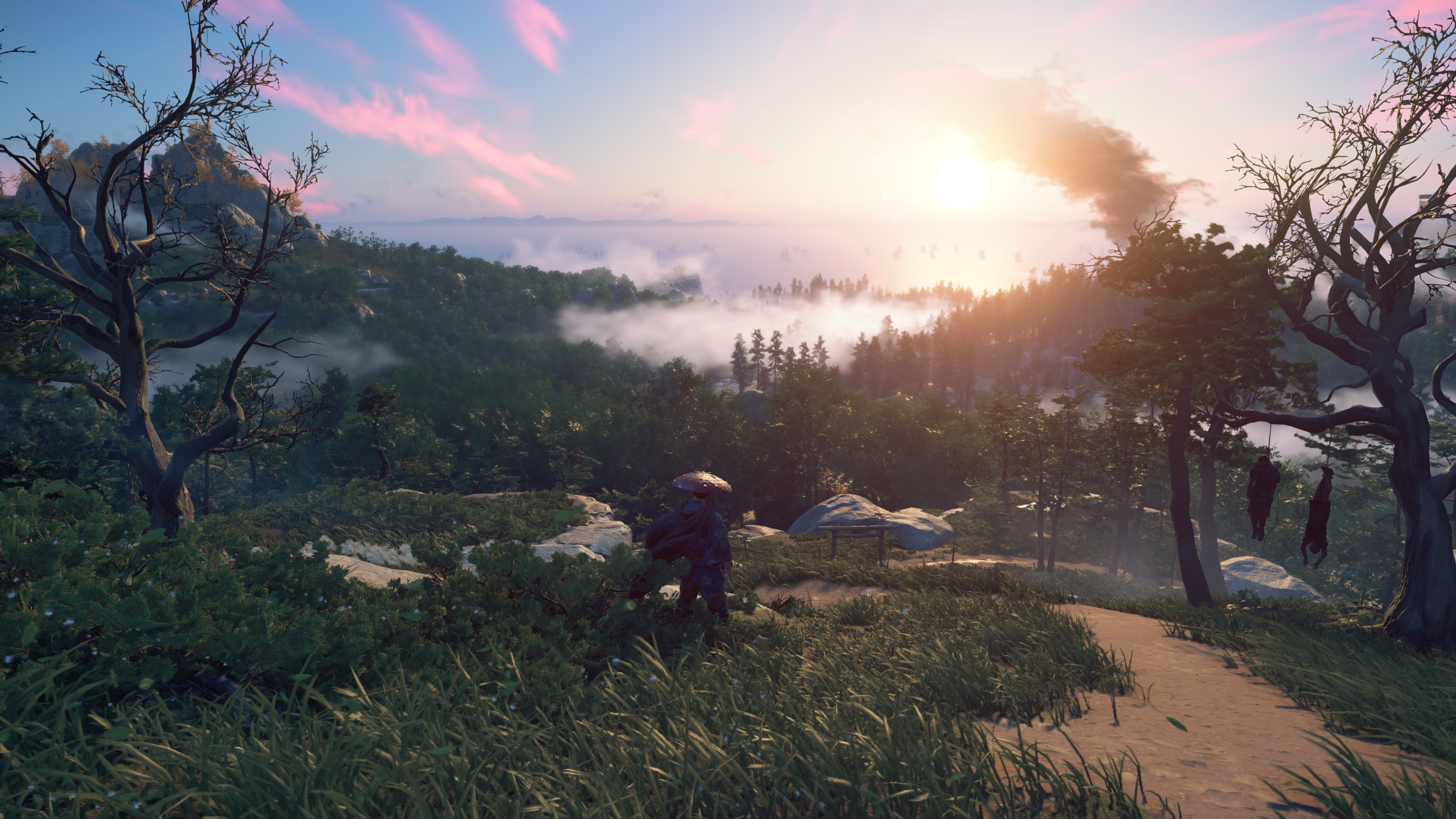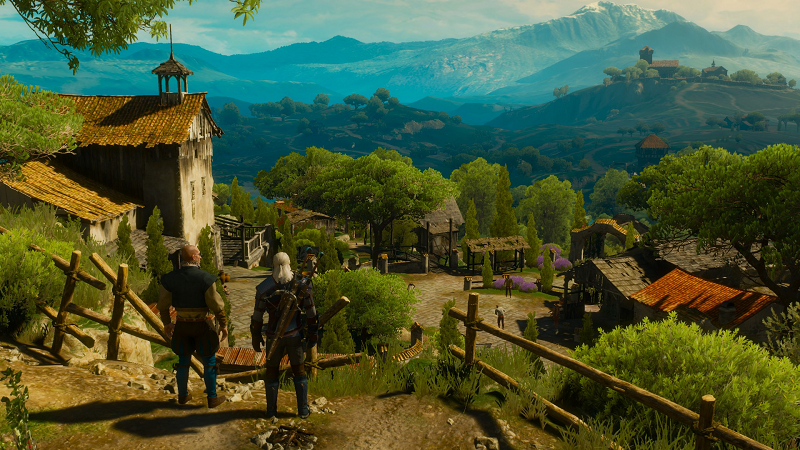
When we play games we want to enjoy a singular experience that is the game as a whole. Though there are many parts coming together to form that experience, we expect those parts to work together without standing in the way of each other. When a particular piece does stand out it’s because it is either rather exceptional, or a reason why the game is terrible. Game developers would prefer that their work stands out due to incredible quality instead of a lack thereof, but when they begin a project they start with an idea of an experience their gamers will embark upon. It is incredibly rare for a developer to focus on one aspect, like graphics or sound design, and then build the entire game around that one focal point. Games consist of many parts, and in order to bring the intended vision to life, all parts must exist in harmony. When successful, the gamer’s focus tends to be on the experience itself. That’s where the developer wants our attention: the whole rather than the parts.
It is those parts, however, that must be individually created and married together to form one cohesive and whole experience. The developer must recognize each individual aspect of their game and give each its due attention. Should any category lack, the gamer will know, and one rotten aspect can spoil the entire game. Developers know this, so they dedicate different sections of their studio to certain aspects of their game. They each work together on the project, but their focus varies drastically. Though each game may have variations on the categories it brings to the table, the anatomy of any given game tends to include specific parts in its body, including: Graphics, Music, Sound Design, Level Design, Story, Controls, Gameplay, and the Little Things sprinkled throughout. Each of these areas must not only work by itself, but also work in tandem with the other systems in order to create one harmonious experience. To better appreciate each part of a game’s anatomy, let’s quickly examine the categories that make the greatest games so incredible.

The first thing you’ll likely notice about a game are the graphics. They are our visual portal into a game’s world, and are so integral to a game’s success that a gamer may make a purchasing decision on screen shots alone. Not only does the visual fidelity need to pass muster, but the art style needs to please the gamer and complement the overall aesthetic design of the game. A video game relies on the video part as one of its more visceral aspects. A lot of a game’s apparent quality can be assumed by the graphics alone, but the graphics and art do more than simply please the eyes.
When a gamer first feasts their eyes on a game, the graphics have to pull them into the game’s world. The aesthetics must not only be pleasing, but must fit the mood and tone of the game. If I’m playing a Resident Evil game, it would be very strange to encounter Mario with his kid-friendly appearance and bright color scheme. Likewise, it would be bizarre to create a Super Mario game where Mario must make his way through a grotesque environment filled with blood and gore. It is possible to meld the two together, as seen in Luigi’s Mansion, but the overall motif must fit the theme and audience. The gamer feels something by simply looking at the graphics, and the player is wowed by the special effects employed. Because of their “in-your-face” value, graphics are often the first thing gamers will talk about regarding any game.

What isn’t always an immediate showstopper is the music in a game. In the early days of gaming, music was featured more prominently and was a defining feature of a game. Recent games tend to find the music more subdued, but no less important. The music of a game contributes immediately to the mood of the project. Hearing music invokes feelings inside us. We feel what the developers want us to feel, and any action on the screen can be interpreted in a very specific way depending on the music implemented in the moment.
As such, music can be used to manipulate a gamer into feeling a certain way during gameplay. We can feel upbeat, happy, and joyful, which can help to overcome some shortfalls in a game should the music be engaging and moving enough. But it can be used to give us a sense of despair and fear as well, keeping us on the edge of comfort and sanity. As the music changes organically, we can be drawn to certain areas of a game more than others because we find the music more pleasing in one area over another. If used correctly, the musical score can actually become a sort of character in the game. Some of the best games we play owe a lot to the successful implementation of music.
Of course, the music isn’t the only thing our ears are listening to in a game. Sound design plays a crucial role in the believability and integrity of a game’s world. Anything that happens in a game needs to have a reactive sound attached to it or the engagement of the action takes a hit. Whether it’s a hyper-real sound effect from a gun shot, or the “boingy” sound when Mario leaps over a barrel in Donkey Kong, sound effects are integral to the experience. When designing their game, developers must decide whether the sound effects will be realistic or fantastical, hard or soft in quality and timbre, and how they will otherwise marry with the animations and visual effects on display.
For all the work that goes into sound design, however, those that work on it are often the most pleased when their work does not stand out. When pulled off successfully, the sound design comes across as organic and natural; an obvious implementation that seems as if no work was done in their placement. They just somehow always existed in the game’s world, exactly as they should. As such, sound design can often be a thankless job, but integral to the overall experience. Also, like music, sound effects can be used to cue the player and manipulate their actions, so those involved in sound design sometimes get to stretch their creativity beyond the effects themselves. Since it’s easy to overlook and take for granted, sound design can often be an unsung hero of a successful game.

Following in that vein, level designers have a challenging role marrying the aesthetics with the game and control concepts. Often seen as “block organizers” by the graphic artists, they must play a game of Tetris with the levels to make sure they will be fun, make sense with the world, and still be able to have art added in and among them to remove their “blockiness”. Level designers must consider the verticality of a level, the length of play time across the level, the types of enemies and obstacles that will inhabit the space, and the overall fun factor to be found within. Level design is a daunting task, but all of our time exploring the game space will be made interesting or lackluster due to the success of the designers’ imagination and implementation of their levels. Figuring out how those levels work with a game’s design, however, can be tricky business. Game spaces and set pieces must be designed to sustain the action, implement the puzzle and story cues, and wow the players with interesting places to explore. Working with the artists, the level designers must create workable places to play that will also allow the art team’s designs to live and flourish. This is often one of the most challenging parings in the entire game design process, but when the symmetry is there, the end result often dazzles players with some of the most impressive set pieces and areas in all of gaming. When we find ourselves really enjoying the spaces we’re traveling, and when traveling around the world feels right and makes sense, we have the level designers to thank.

In those levels, there has to be a purpose for the action taking place. The story of a game often drives the motivation for all of the button pressing. Why do we care what happens? The writers do their best to pen a tale that keeps us caring. Whether we’re simply saving a princess, town, or world, or the plot goes deeper and twists in some dark or creative fashion, the game’s story can be that driving force that gets us talking, even leading to further exploration in the form of books and other media. When we’re presented with a good story, our emotions become invested. We’re no longer ridding the world of goons and creeps for the sake of a high score or other progression, but we’re actually participating in the major plot points of our favorite stories. Unlike non-interactive forms of entertainment, with video games the fate of the plot rests in our hands, so we better not fail!
Writing the story, then, must take the player’s assumed emotional journey into perspective, but also the graphics, genre, and overall aesthetics. The story is driving the game, with few exceptions turning that concept around. The type of experience the game offers usually decides the tone and content of the story. If the graphics are bright and cheerful, with breezy gameplay and sound effects out of a Saturday morning cartoon, then the story shouldn’t be about performing rituals of the macabre with dark and mature themes. The overall motif of a game has to mesh in every regard, so the story writers need an intimate look at the style and systems intended for a game before they can begin to write, with the exception being those few games where the story dictates all else. For many games, the story concepts and game design ideas are hammered down together as designers try to create something that is engaging in both gameplay and story. As games became bigger and more complex projects through their brief history, the importance of stories in games has risen to the point that we expect much more out of them.

While game stories continue to grow and flourish, the very heart of a video game is the ability to control the action on the screen. No other entertainment medium hands us the literal controls and asks us to be the hero/heroine. The ability to control something on the screen is the single most important thing that differentiates video games, propelling the tangible experience to a level of engagement not possible in other forms of entertainment. We are the ones storming the castle. We are the ones braving impossible perils to retrieve a lost treasure for some snobby buffoon. We are the only hope, and if we fail, the story ends. All hope is lost because of our incompetence. There are no more sunny days, until we press the start button again. We are in the game, and we are in control.
Naturally, it helps us to be in control if the controls themselves are well designed. Coming up with the best control concepts for a game is perhaps another of the most thankless jobs in a gaming project. When it works masterfully, gamers are content, but if anything feels slightly out of line, gamers revolt. The gameplay concepts mean nothing if we cannot responsively engage in them. Whether we’re using a controller, joystick, light gun, mouse, keyboard, roller ball, or power glove, the controls must feel tight and natural. The controls must not only fit the game itself, but must pay heed to expected parameters already established by other successful games. If a racing game is designed for a controller, the right trigger needs to be the gas pedal or players will respond negatively as they try to adjust. Everything needs to be intuitive and make sense with every stick or mouse movement, and button press. Game developers understand that they need to absolutely nail the controls for their project because they are an essential and integral core to the main ingredient of any game: the gameplay.

Though tight and responsive controls are necessary to move something around a screen, it’s the gameplay systems that provide the actual fun in a game. The actions mapped to each button, the physics, the frames of animation linking to different actions, the amount of movement each action affords, the balancing of various attacks, abilities, and other factors, these and more hint to a staggering variety of aspects needing attention when designing the gameplay of a game. While controls are about how well actions map to buttons, and how responsive those button presses are, the gameplay is all about how the game systems work and feel as we’re pressing those buttons.
The actions we make need to feel right and provide options and variety depending on the type of game. If we jump, can we then backdash? Can we press down and jump to descend through floors? What are our options when falling on a foe? What happens when we actually strike a baddie? Is there hit delay or another stylish element? Can we combo into another action? How high can we jump? Does it feel “floaty” on the way down? How accurate is a gun when aiming down sights? Do the physics make sense with my actions? If I lose, do I feel the game cheated, or is there something I know I could have done to avoid the loss? When we’re talking about the merits of a game, it’s often the gameplay that we’re focusing on. In nearly every game, the gameplay is the single most important aspect of all other parts. Even without an epic story, if the gameplay is fun, people will want to play it. Likewise, even with an epic story, most gamers aren’t going to want to slog through broken game mechanics to see it. If the gameplay doesn’t feel right, all other elements of a game can suffer as the gameplay is the heart of the entire game.

Not to be overshadowed by the other categories, it’s the little things in a game that can often be a catalyst to a game’s overall appreciation. These are the often neglected or intangible details added to a game that we can take for granted. When playing Super Castlevania IV, jumping by the ropes on a bridge will cause them to vibrate, and walking to the side of a ledge will find Simon’s feet placed together to fit on the edge. In The Last of Us 2, the detailed physics of glass and rope are mesmerizing, warm blood melts snow, and water, and items in that water, respond so naturally to outside stimuli. Super Metroid correctly displays Samus’ gun arm when she’s facing left or right, which was an insanely rare detail at the time of release due to the need for extra animations loaded in. Halo 3 has inscribed casings, ice cubes melt in Metal Gear Solid 2, Grand Theft Auto V has light pollution in the city, and in Red Dead Redemption 2, horses…change…in cold weather.
These are not easter eggs added to discover, but little details that we likely wouldn’t have noticed or cared about had they been left out. However, their implementation makes a world of difference to the credibility of the game’s world. It’s easy to pass these details by without the slightest bit of realization, but they may make sense on a subliminal level that attaches us even more to the game. If we do outright recognize them, we tend to appreciate how much work and love went into a project because these details didn’t need to be added; they were added because the team working on the game wanted to pour as much love and attention into the game as possible. When making a video game, it is often the little things that make the biggest difference.

Throwing everything into a pot, the end result could be a fantastic stew. Regardless of the game, these are the necessary elements for delicious gaming. If any ingredient is lacking, however, it will be noticed and not well regarded. Different games require different amounts of ingredients; a Japanese role-playing game might require more story and less graphical or gameplay flourishes than other projects, but poor ingredients will still be regarded as such. When we play the highest quality of games, we know that all of these categories have been married together to create a single epic that has us discussing the achievements of every one of its parts.
When we play a truly incredible game, we want to enjoy it as a singular entity, taking each part as an obvious inclusion to the created experience. We may muse about the music, feel the oomph of the sound effects, and loudly cheer when we open up a can in an epic fight. We feel that tangible gameplay moment. The intuitive controls keep us engaged. The graphics and visual effects astound us. The music moves us. The sound effects are spot on. The level design is masterful and fun to explore. The story invests us and keeps us thinking. All of the little things cement a smile on our faces. The entire game is exceptional because every part of it has a welcome place and works together to create one amazing world. What a fine lesson our games teach.


